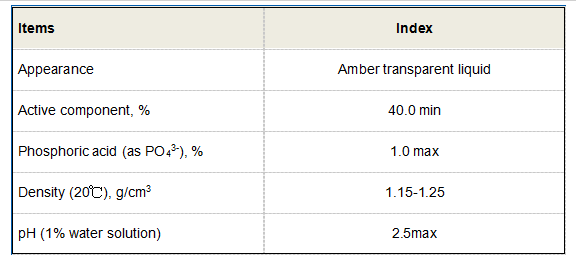Applications and Benefits of Anionic Polyacrylamide in Various Industries
The Versatile Applications of Anionic Polyacrylamide
Anionic polyacrylamide (APAM) is a synthetic polymer that has gained significant traction in various industries due to its unique properties and functionalities. As a water-soluble polymer, APAM is notable for its ability to enhance the performance of products in fields ranging from agriculture to wastewater treatment. This article delves into the diverse applications of anionic polyacrylamide and highlights why it has become a critical component in many processes.
1. Water Treatment
One of the most prominent uses of anionic polyacrylamide is in water treatment. Its flocculating properties make it an effective coagulation agent for removing suspended particles from wastewater. When added to water, APAM binds with impurities and facilitates their aggregation into larger flocs, which can then be easily removed through sedimentation or filtration. This application is especially important for municipal wastewater treatment plants and industrial facilities, helping them meet environmental regulations and ensuring cleaner water is released back into the ecosystem.
2. Agricultural Uses
In agriculture, anionic polyacrylamide serves multiple purposes that enhance crop production and soil management. APAM is commonly used as a soil conditioner, improving soil structure and increasing water retention. This is particularly beneficial in arid and semi-arid regions, where water scarcity is a significant challenge. By increasing the soil's moisture-holding capacity, APAM helps farmers achieve better yields while minimizing irrigation needs. Furthermore, it can be applied as a polymer for the encapsulation of fertilizers and pesticides, allowing for slow release and reducing leaching losses.
3. Oil Recovery
The oil and gas industry also utilizes the properties of anionic polyacrylamide in enhanced oil recovery (EOR) processes. During the extraction of oil from reservoirs, APAM is used to improve the viscosity of water injected into the wells. This enhances the displacement of oil, facilitating a more efficient extraction process. The use of APAM in EOR not only increases yield but also helps in the stabilization of the wellbore, reducing costs and environmental impact associated with traditional methods of oil extraction.
anionic polyacrylamide uses

4. Mining and Mineral Processing
In the mining sector, anionic polyacrylamide plays a pivotal role in mineral processing. It is used as a flocculant to facilitate the separation of minerals from gangue materials. When APAM is added to the slurry of crushed ore, it agglomerates the valuable minerals, allowing for a more efficient and effective separation process. This application is vital for maximizing resource recovery and minimizing wastage, making mining operations more sustainable.
5. Construction Industry
The construction industry has also recognized the utility of anionic polyacrylamide. It is often incorporated into cement and concrete to enhance their properties. By improving the material's workability and reducing water permeability, APAM contributes to the longevity and durability of concrete structures. Additionally, the use of APAM in the construction of roads and highways can improve the stability and strength of asphalt mixtures, resulting in safer and more robust surfaces.
6. Food and Beverage Processing
Anionic polyacrylamide finds its way into the food industry as well. It can be utilized in the clarification of beverages, such as fruit juices and wines, where it helps in the removal of suspended solids and turbidity. This ensures clearer, more visually appealing products while maintaining the quality and taste of the beverages.
Conclusion
The versatility of anionic polyacrylamide allows it to serve various functions across multiple sectors. From enhancing water treatment processes and agricultural productivity to improving oil recovery and mineral processing, its applications are diverse and impactful. As industries continue to seek sustainable and efficient solutions, the role of anionic polyacrylamide is expected to expand, paving the way for innovative products and processes that benefit both businesses and the environment. The ongoing research and development into its potential uses promise to unlock even more applications, solidifying APAM's position as an invaluable resource in modern industry.
-
Water Treatment with Flocculant Water TreatmentNewsJun.12,2025
-
Polymaleic AnhydrideNewsJun.12,2025
-
Polyaspartic AcidNewsJun.12,2025
-
Enhance Industrial Processes with IsothiazolinonesNewsJun.12,2025
-
Enhance Industrial Processes with PBTCA SolutionsNewsJun.12,2025
-
Dodecyldimethylbenzylammonium Chloride SolutionsNewsJun.12,2025





